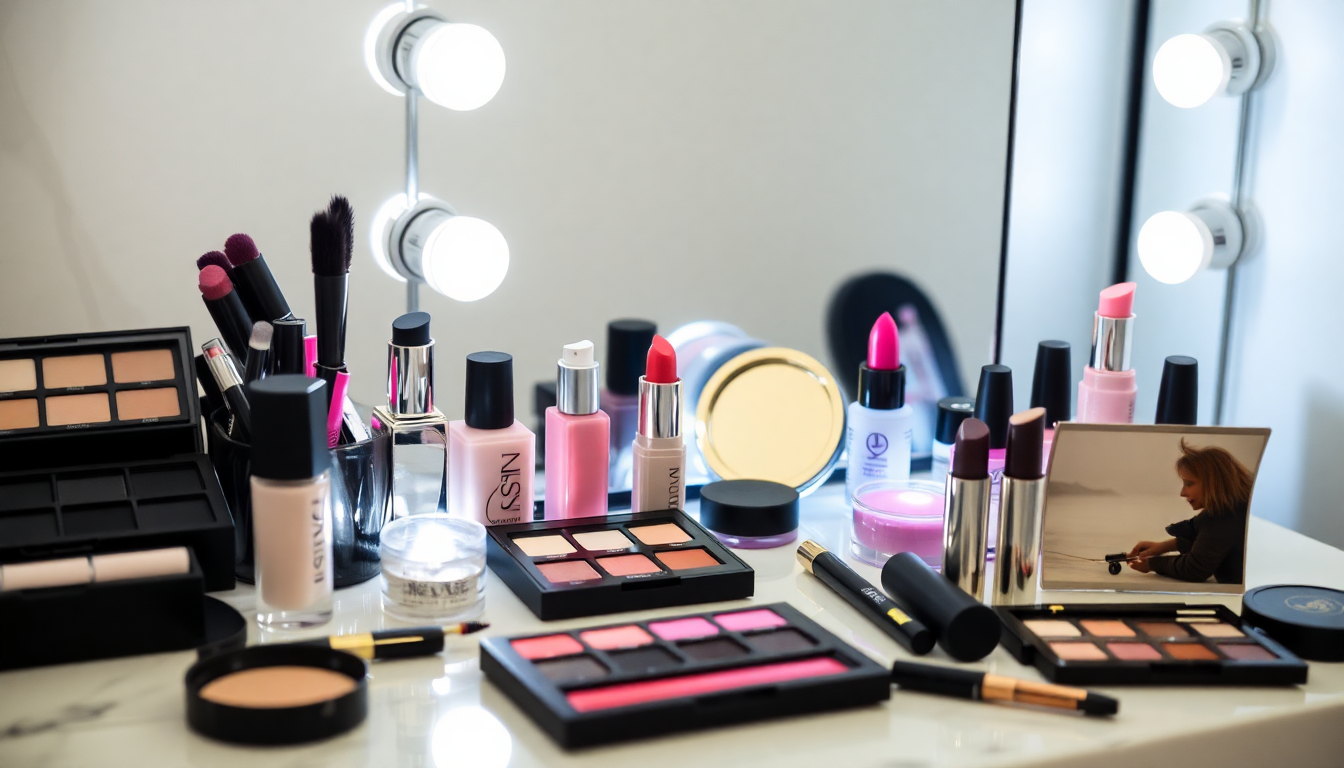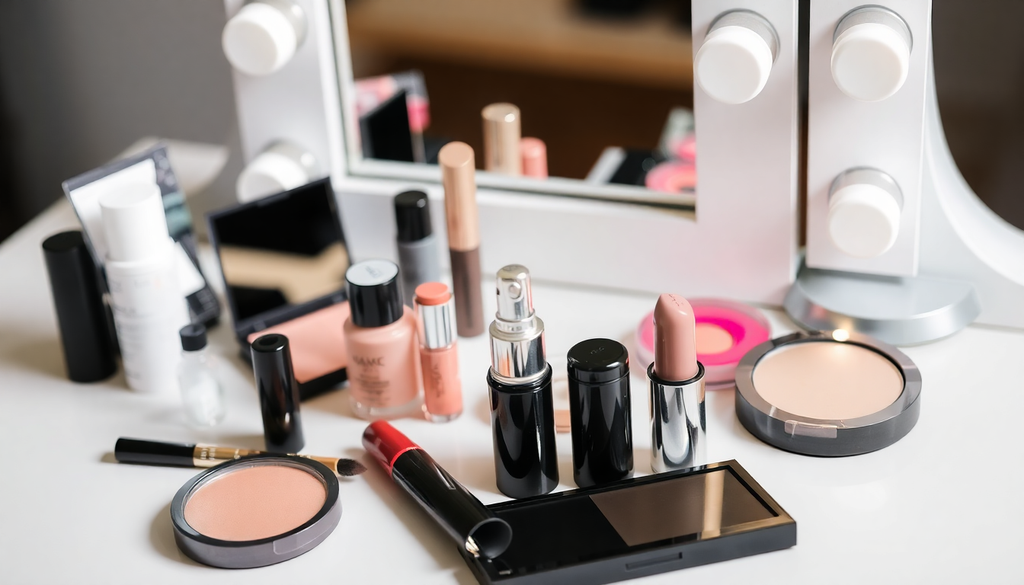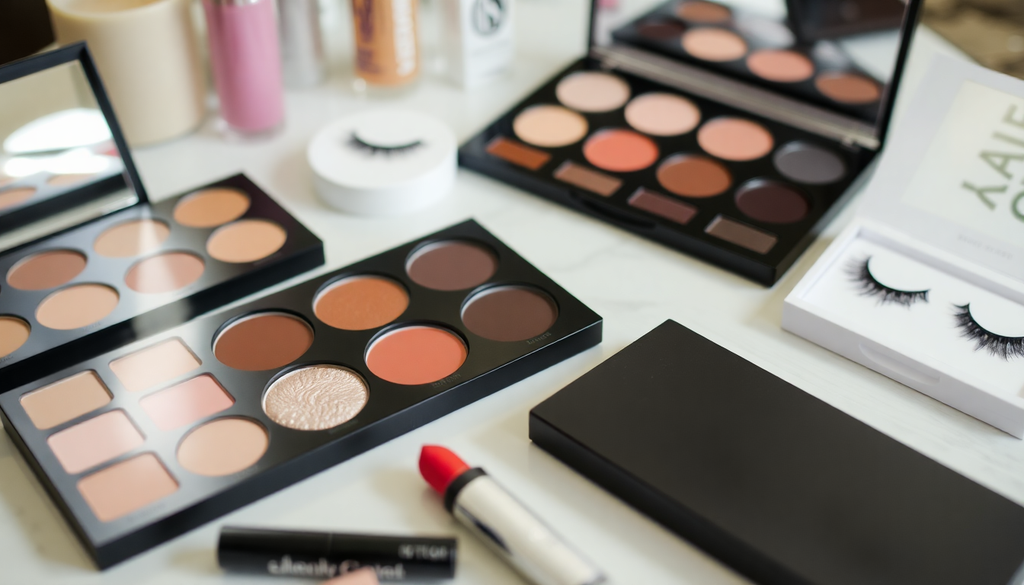
Launching Your Private Label Makeup Brand: Essential Steps for Success Without Minimum Order Constraints
Introduction
Starting your own private label makeup brand can be an exciting and profitable venture. With the rise of e-commerce and the growing demand for personalized beauty products, now is the perfect time to embark on this journey. In this guide, we will explore essential steps for launching your private label makeup brand, focusing on how to do so without the constraints of minimum order quantities.
Step 1: Understand the Market
Before diving into the world of private label makeup, it's crucial to conduct thorough market research. This will help you understand your target audience and identify gaps in the market. Consider the following:
- Identify your niche: Determine the specific segment of the makeup industry you want to focus on. This could include categories such as vegan, cruelty-free, organic, or specific product types like lipsticks, foundations, or eyeshadows.
- Analyze competitors: Research established brands and emerging competitors. Understand their strengths, weaknesses, pricing strategies, and customer engagement tactics.
- Understand current beauty trends: Stay updated with the latest trends in makeup and beauty. This includes popular ingredients, packaging styles, and consumer preferences.
- Engage with your audience: Use social media platforms to engage with potential customers. Conduct polls or surveys to gather insights on what they value in makeup products.
Step 2: Choose a Reliable Manufacturer
Selecting the right manufacturer is vital for your brand's success. Here are some tips to find a reliable partner:
- Research manufacturers: Look for manufacturers that specialize in private label cosmetics. Consider their experience, reputation, and product range.
- Check for certifications: Ensure the manufacturer holds relevant certifications such as ISO (International Organization for Standardization) and GMP (Good Manufacturing Practices) to guarantee product quality and safety.
- Request samples: Before making any commitments, request product samples to evaluate the quality, packaging, and overall presentation of the makeup products.
- Discuss customization options: Ensure that your manufacturer can accommodate your specific product formulations and packaging designs.
- Negotiate terms: Discuss pricing, lead times, and order quantities. Look for manufacturers that allow flexibility in order sizes, especially if you are starting small.
Step 3: Navigate Import Policies and Regulations
When importing cosmetics, it's essential to understand the regulations of your target market. Here are some key considerations:
- Familiarize yourself with regulations: Research the cosmetics regulations in your country and any countries you plan to sell in. This includes understanding the legal definitions of cosmetics and any restrictions on ingredients.
- Ensure compliance with labeling requirements: Proper labeling is crucial for consumer safety. Include information such as ingredients, usage instructions, and warnings. Different countries have different labeling requirements, so be sure to comply with the regulations in each market.
- Check for specific certifications: Depending on your target market, certain products may require certifications, such as FDA approval in the USA or CE marking in the EU.
- Understand import duties and taxes: Research any import duties or taxes that may apply to your products. This will help you price your products competitively while ensuring compliance with regulations.
Step 4: Develop Your Brand Identity
Your brand identity is crucial in establishing a connection with your audience. Consider the following elements:
- Choose a compelling brand name: Your brand name should be memorable, easy to pronounce, and reflect your brand's values and mission.
- Create a unique logo: Invest in professional logo design that captures the essence of your brand. Your logo will be a key visual element across all marketing materials.
- Develop a unique selling proposition (USP): Clearly articulate what sets your makeup brand apart from competitors. This could be product quality, sustainability, or innovative formulations.
- Create a cohesive brand message: Your messaging should resonate with your target audience. Develop a tagline that encapsulates your brand's mission and values.
- Establish a visual style: Create a consistent visual aesthetic that reflects your brand identity across all platforms, including your website, packaging, and social media.
Step 5: Set Up Your Online Store
With the rise of e-commerce, having an online store is essential for your makeup brand. Follow these steps to set up your online presence:
- Select an e-commerce platform: Choose a user-friendly e-commerce platform such as Shopify, WooCommerce, or BigCommerce. Make sure it supports features you need for your makeup brand.
- Design your website: Create a visually appealing website that reflects your brand identity. Ensure it is easy to navigate and mobile-friendly.
- Add high-quality product images: Invest in professional photography to showcase your products. High-quality images help build trust and encourage purchases.
- Write compelling product descriptions: Craft engaging and informative product descriptions that highlight the benefits and features of your makeup products.
- Optimize your site for SEO: Use relevant keywords throughout your website to improve search engine visibility. Focus on optimizing product pages, blog content, and meta descriptions.
- Set up payment gateways: Ensure you have secure payment options available for customers, such as credit cards, PayPal, or other payment methods.
Step 6: Implement Marketing Strategies
Marketing is key to gaining visibility and attracting customers. Consider these strategies:
- Utilize social media platforms: Platforms like Instagram, TikTok, and Pinterest are ideal for showcasing makeup products. Create engaging content, tutorials, and behind-the-scenes glimpses to connect with your audience.
- Collaborate with beauty influencers: Partner with beauty influencers for product reviews and promotions. Influencer marketing can significantly boost your brand's visibility and credibility.
- Invest in targeted online advertising: Use Google Ads and Facebook Ads to reach potential customers. Tailor your ads to specific demographics and interests.
- Engage with your audience through email marketing: Build an email list and send regular newsletters featuring promotions, new product launches, and beauty tips to keep your audience engaged.
- Leverage content marketing: Create a blog on your website to share beauty tips, makeup tutorials, and industry insights. This can help establish your brand as an authority in the beauty space and improve SEO.
- Host giveaways and contests: Engage your audience by hosting giveaways or contests. This can help increase your brand's visibility and attract new customers.
Step 7: Monitor and Adapt
Once your brand is launched, continuously monitor your performance and adapt your strategies as needed. Key areas to focus on include:
- Customer feedback and reviews: Encourage customers to leave reviews and feedback. Use this information to improve your products and customer service.
- Sales data and trends: Analyze sales data to identify best-selling products and emerging trends. Use this information to adjust your product offerings accordingly.
- Marketing campaign effectiveness: Track the performance of your marketing campaigns. Assess which strategies are generating the best results and adjust your approach as needed.
- Stay updated on industry trends: The beauty industry is constantly evolving. Stay informed about new ingredients, technologies, and consumer preferences to keep your brand relevant.
Step 8: Focus on Customer Experience
Building a loyal customer base is essential for long-term success. Focus on providing an exceptional customer experience:
- Offer excellent customer service: Make it easy for customers to reach you with questions or concerns. Promptly respond to inquiries and resolve issues efficiently.
- Implement a user-friendly return policy: A clear and fair return policy can enhance customer trust and encourage purchases.
- Personalize the shopping experience: Use customer data to personalize marketing messages and product recommendations, creating a more tailored shopping experience.
- Engage with customers post-purchase: Send follow-up emails after purchases to thank customers, request feedback, and encourage reviews. This can help foster a sense of loyalty.
Conclusion
Launching a private label makeup brand without minimum order constraints is a feasible and rewarding venture. By following these essential steps and staying informed about market trends and regulations, you can pave the way for your brand's success in the competitive beauty industry. Start today, and watch your dream of owning a makeup brand come to life!


